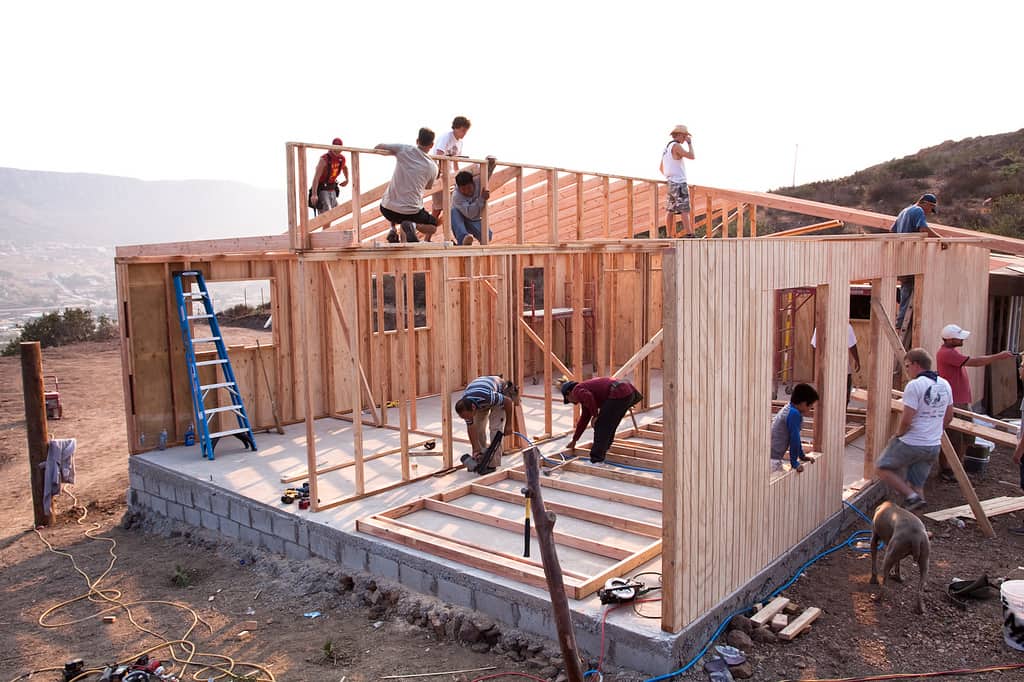
Embarking on the journey of building a house is a significant milestone, one that demands meticulous attention to detail and comprehensive planning. Constructing a dwelling entails a multitude of considerations, ranging from the selection of the ideal location to the intricacies of regulatory compliance. Each decision made throughout the process profoundly impacts the outcome, influencing not only the immediate living experience but also the long-term sustainability and value of the property.
Location Selection
Choosing the right location lays the foundation for a harmonious living experience. Environmental factors such as climate, topography, and natural hazards play a crucial role in determining the suitability of a site. Accessibility, proximity to essential amenities, and transportation networks are equally vital considerations. Moreover, assessing the future development potential of the area ensures that the investment retains its value over time.
In evaluating environmental factors, it’s imperative to consider aspects such as sunlight exposure, prevailing winds, and susceptibility to natural disasters. Understanding these elements allows for informed decisions regarding site orientation and the implementation of appropriate design strategies for energy efficiency and disaster resilience.
Accessibility encompasses not only physical proximity to amenities such as schools, healthcare facilities, and shopping centers but also transportation infrastructure. Evaluating factors such as commute times, traffic patterns, and public transit options ensures convenience and enhances the quality of life for occupants.
Anticipating future development trends enables homeowners to capitalize on potential appreciation in property value. Researching urban planning initiatives, infrastructure projects, and zoning regulations provides insights into the long-term prospects of the neighborhood, guiding decisions regarding investment and lifestyle preferences.
Design and Layout
The architectural design and layout of a house significantly influence its functionality, aesthetics, and adaptability. Selecting a style that resonates with personal preferences while considering the cultural and historical context of the area adds character and value to the property. Moreover, prioritizing functional spaces and incorporating flexible design elements enhances livability and accommodates evolving needs.
Architectural styles range from traditional to contemporary, each reflecting unique design principles and aesthetic sensibilities. Whether opting for a timeless colonial revival or embracing the sleek lines of modernist architecture, the choice should align with both personal taste and the context of the surrounding built environment.
Functional spaces form the backbone of a well-designed home, catering to the diverse needs of its occupants. From open-plan living areas that foster social interaction to secluded retreats for relaxation and privacy, thoughtful consideration of spatial layout enhances comfort and functionality. Additionally, integrating multifunctional spaces and adaptable design features ensures versatility and future-proofing against changing lifestyle dynamics.
Future adaptability is a crucial consideration in the design process, allowing the house to evolve alongside its occupants. Incorporating elements such as universal design principles, modular construction techniques, and technology-ready infrastructure facilitates seamless upgrades and modifications as needs evolve over time. By prioritizing flexibility and longevity, homeowners can maximize the longevity and value of their investment.
Construction Materials
The selection of construction materials is pivotal in ensuring the durability, sustainability, and cost-effectiveness of the building. Opting for materials renowned for their structural integrity and resistance to environmental factors enhances the longevity and resilience of the house. Furthermore, prioritizing sustainable materials minimizes the environmental footprint of the construction process and promotes ecological stewardship.
Durability and longevity are paramount considerations in material selection, particularly in regions prone to extreme weather conditions or seismic activity. Materials such as reinforced concrete, steel framing, and durable hardwoods offer superior strength and resilience, ensuring the structural integrity of the building over its lifespan.
Sustainability is increasingly becoming a central focus in construction practices, with an emphasis on reducing energy consumption, minimizing waste, and utilizing renewable resources. Choosing eco-friendly materials such as reclaimed wood, recycled metals, and low-impact insulation not only reduces environmental impact but also contributes to healthier indoor air quality and lower utility costs.
Cost-effectiveness encompasses not only the initial outlay for materials but also long-term maintenance and operational expenses. Conducting a life-cycle cost analysis helps weigh the upfront investment against ongoing savings and potential replacement costs, ensuring that the chosen materials offer the best value over time.
Budgeting and Financial Planning
Effective budgeting and financial planning are essential for realizing the vision of a dream home while maintaining fiscal responsibility. Accurately estimating initial costs, accounting for contingencies, and planning for long-term expenses are crucial steps in ensuring a successful construction project without compromising on quality or design integrity.
Initial costs encompass a wide range of expenses, including land acquisition, design fees, construction materials, labor, and permits. Thoroughly researching and obtaining multiple quotes for each aspect of the project helps identify potential cost-saving opportunities and ensures transparency in budget allocation.
Contingency funds are indispensable safeguards against unforeseen circumstances and cost overruns during the construction process. Setting aside a buffer of at least 10-20% of the total project cost helps mitigate risks associated with construction delays, design changes, or unexpected site conditions, providing peace of mind and financial security.
Long-term expenses encompass ongoing maintenance, utilities, insurance, and property taxes, which contribute to the overall cost of homeownership. Anticipating these expenses and incorporating them into the budgeting process ensures that the investment remains sustainable and financially viable in the years to come.
Regulatory Compliance and Permits
Navigating the regulatory landscape is a critical aspect of the construction process, requiring adherence to zoning regulations, building codes, and permitting requirements. Ensuring compliance with these legal and regulatory frameworks not only avoids costly delays and penalties but also safeguards the safety, health, and welfare of occupants and the surrounding community.
Zoning regulations dictate land use, density, setbacks, height restrictions, and other parameters that govern the development of properties within a specific jurisdiction. Understanding these regulations and obtaining necessary variances or special permits ensures that the proposed project aligns with the intended land use and complies with local planning objectives.
Building codes establish minimum standards for structural integrity, fire safety, energy efficiency, and accessibility, among other considerations. Adhering to these codes throughout the design and construction phases ensures the safety and habitability of the building and protects against liability and potential litigation.
The permitting process involves obtaining approvals from relevant regulatory authorities for various aspects of the construction project, including site development, building plans, utilities, and environmental impact assessments. Navigating this process efficiently requires thorough documentation, clear communication with regulatory officials, and compliance with all applicable requirements.
Conclusion
Building a house is a multifaceted endeavor that demands careful consideration of numerous factors, from location selection and design to materials, budgeting, and regulatory compliance. By prioritizing sustainability, functionality, and fiscal responsibility, homeowners can create a living space that not only meets their immediate needs but also adapts to future challenges and opportunities. With proper planning and attention to detail, the journey of building a house becomes a rewarding experience that culminates in the realization of a cherished dream.







